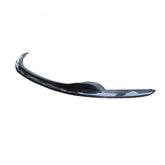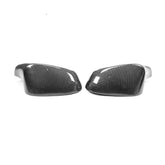Upgrading your vehicle’s suspension with coilovers can be a rewarding experience, as it allows you to fine-tune your car’s handling and performance to suit your driving preferences. While the installation process may vary slightly depending on your car’s make and model, the following step-by-step guide provides a general overview of how to install coilovers on most vehicles. Before proceeding, ensure you have the necessary tools and equipment, and if you’re not confident in performing the installation yourself, it’s always best to seek professional help.

Step 1: Gather the Tools
Before starting the installation, make sure you have all the necessary tools at hand. Commonly required tools include a jack and jack stands, a wrench set, socket set, Allen wrenches, a torque wrench, spring compressors, and penetrating oil. Additionally, it’s essential to have safety gear such as gloves and eye protection.
Step 2: Lift the Vehicle
Park your vehicle on a flat surface and engage the parking brake. Use a jack to lift the vehicle off the ground, one corner at a time, and secure it in place with jack stands. Ensure the vehicle is stable and won’t move during the installation process.
Step 3: Remove the Wheels
With the vehicle securely lifted and supported, remove the wheels from the corners where you plan to install the coilovers. This step provides better access to the suspension components.
Step 4: Remove the OEM Suspension
Locate the OEM suspension components, including the strut assembly or coil spring and shock absorber. Use the appropriate tools to disconnect any brake lines, sway bar links, and other components attached to the suspension. Next, remove the bolts securing the strut assembly to the wheel hub and upper strut tower. Carefully lower the suspension components from the vehicle.
Step 5: Disassemble the Strut Assembly
If you are installing full coilover assemblies, you’ll need to disassemble the OEM strut assembly. Use spring compressors to safely compress the coil spring, allowing you to remove the upper strut mount and the OEM spring. Be cautious during this step, as working with compressed springs can be dangerous.
Step 6: Assemble the Coilovers
Follow the manufacturer’s instructions to assemble the new coilovers. Install the coil springs onto the shock absorbers and attach the upper strut mount. Double-check that all components are securely fastened.
Step 7: Install the Coilovers
Carefully position the assembled coilovers back into the wheel wells, aligning them with the mounting points on the wheel hub and upper strut tower. Use the provided hardware to secure the coilovers in place, but do not fully tighten the bolts at this stage.
Step 8: Adjust Ride Height and Damping
If your coilovers are adjustable, set the desired ride height and damping settings according to your preferences. Refer to the manufacturer’s instructions for guidance on making these adjustments.
Step 9: Torque the Bolts
With the coilovers in place and adjusted to your liking, torque all the bolts to the manufacturer’s specifications. Ensure that all fasteners are tightened securely, as loose bolts can lead to unsafe driving conditions.
Step 10: Reinstall the Wheels
Once the coilovers are properly installed and secured, put the wheels back on and hand-tighten the lug nuts.
Step 11: Lower the Vehicle and Tighten Lug Nuts
Using the jack, lower the vehicle until all four wheels are back on the ground. Finally, use a torque wrench to tighten the lug nuts to the recommended torque setting specified in your vehicle’s manual.
Step 12: Test Drive and Alignment
Take your vehicle for a short test drive to assess the new suspension setup. Pay attention to any unusual noises or handling characteristics. If everything feels and sounds normal, your coilovers are likely installed correctly. However, it’s crucial to get a professional alignment to ensure your vehicle’s wheels are properly adjusted for optimal tire wear and handling.
Congratulations! You’ve successfully installed coilovers on your vehicle, and you can now enjoy the benefits of improved handling and performance.










